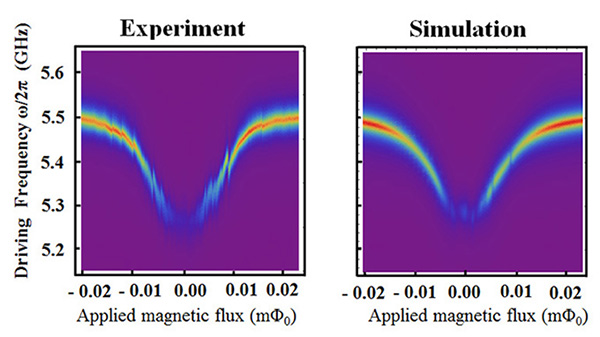Coherent Coupling Between 4300 Superconducting Qubits and a Superconducting Resonator
Hybridization between a superconducting resonator and ensembles of two level systems has been considered as a promising way to realize quantum technologies. The conventional approaches have used natural systems such as atoms & molecules to realize the ensemble where the properties of such "atoms" are difficult to tailor to the properties of the device [1]. Our approach is to create the ensemble from artificial atoms such as superconducting qubits. The properties such superconducting qubits are not intrinsic but can be largely changed even after the fabrication. Moreover, due to their large size, we can in principle achieve individual controllability. In this direction, only a small number of superconducting qubits (8 in total and not an ensemble) has shown collective coupling to a resonator [2]. Here, we fabricate a hybrid device composed of 4300 superconducting flux qubits embedded in a superconducting resonator [3]. We observe a large dispersive frequency shift in the spectrum of 250 MHz as shown in Fig. 1. From our theoretical analysis, we show that this frequency shift is evidence of a coherent coupling between the resonator and thousands of flux qubits. Although the coupling strength of a single flux qubit with the resonator is much smaller than the inhomogeneous width of the ensemble, the coupling can be enhanced by collective effects. This provides us with a measurable signal for the experiments. Our results represent the largest number of coupled superconducting qubits realized so far.
This work was supported by JSPS KAKENHI JP15K17732 and JP25220601. This work was also partly supported by MEXT KAKENHI JP15H05869 and JP15H05870.
- [1] Z-L. Xiang et al., Rev. Mod. Phys. 85.2 623 (2013).
- [2] P. Macha et al., Nature Commun. 5, 5146 (2014).
- [3] K. Kakuyanagi et al., Phys. Rev. Lett. 117, 210503 (2015).

|
|
Fig. 1. Energy spectrum of a superconducting microwave resonator coupled to an ensemble of flux qubits. (Left) Experimental results. (Right) Theoretical analysis. |